ichiban
100 W
So, I assume that means there is no easy/straight way to attach MP4 directly into a post ?
tatus1969 said:Hi guys,
as part of my kicksurfer project (I was tired of my battery pack manufacturer of wanting >700€ each time I am asking him to prepare a few samples of packs from another cell type), I have started desigining a DIY spot welder.
After some googling, I realized that even when building it myself it would be quite costly, as the required power source needs to have very high specs. A suitable capacitor bank for example would be 100€+.
As I am using cheap race Lipos with 200A current rating for my RC car, I thought that they might be capable for welding as well. A first measurement then showed 1kA into a short!
I am still at the beginning, but I want to share my experience, and at the end make this open hardware that others can copy or build on.
The design thread is here, I hope it is not forbidden to link to a different forum but it is quite time consuming to keep multiple threads with the same subject.
http://www.eevblog.com/forum/projects/guesses-on-what-i-am-attempting-here/
Please let me know what you think, and I would be happy to hear if anyone would want to build one (after it is finished and stable).
xxxxxxxxxxxxxxxxxxxxx
Batteries that have been successfully used with kWeld
ODYSSEY Extreme PC925 12V Auto Battery, 28 lbs
https://endless-sphere.com/forums/viewtopic.php?f=14&t=89039&start=1125#p1556817
ichiban said:So, I assume that means there is no easy/straight way to attach MP4 directly into a post ?
Crash_3174 said:tatus1969 said:Hi guys,
as part of my kicksurfer project (I was tired of my battery pack manufacturer of wanting >700€ each time I am asking him to prepare a few samples of packs from another cell type), I have started desigining a DIY spot welder.
After some googling, I realized that even when building it myself it would be quite costly, as the required power source needs to have very high specs. A suitable capacitor bank for example would be 100€+.
As I am using cheap race Lipos with 200A current rating for my RC car, I thought that they might be capable for welding as well. A first measurement then showed 1kA into a short!
I am still at the beginning, but I want to share my experience, and at the end make this open hardware that others can copy or build on.
The design thread is here, I hope it is not forbidden to link to a different forum but it is quite time consuming to keep multiple threads with the same subject.
http://www.eevblog.com/forum/projects/guesses-on-what-i-am-attempting-here/
Please let me know what you think, and I would be happy to hear if anyone would want to build one (after it is finished and stable).
xxxxxxxxxxxxxxxxxxxxx
Batteries that have been successfully used with kWeld
ODYSSEY Extreme PC925 12V Auto Battery, 28 lbs
https://endless-sphere.com/forums/viewtopic.php?f=14&t=89039&start=1125#p1556817
Hi, all very new here seeking expertise on the kweld. I have had mine now for over 3 years and no real issues. Now all I get is overcurrent messages. Tried 3 batteries now still the same thing. Anyone know why this would be the case. On calibration I got 1850a, 1566a and 1410a, all giving me the overcurrent message. Any ideas would be great thanks all
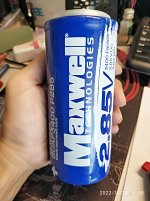
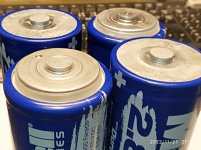
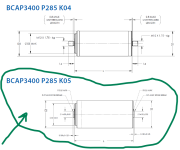
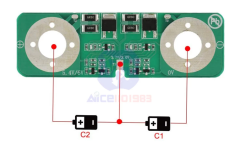
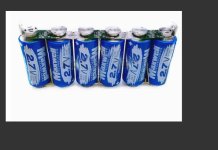
ichiban said:*** Continue with kWeld's Mod ***
I am quite a noob for these supercaps things, any comments / tips would be greatly appreciated.

A-DamW said:I have been using a 6s1p supercap bank(used, 2nd hand cells) to start my 5.9litr cummins diesel pickup since 2014, NO balancing circuity.
They are the Maxwell 3000F 2.70V(slightly older generation than yours).
Open circuit voltage on my alternator(no lead acid battery in parallel) is around 15V max(usually closer to 13.8V).
So 15Volts/6series = 2.5V per capacitor, ~0.2V or 200mV headroom per cap, worst case scenario.
When I built the cap bank, I started with all cells at 0V, then charged them(as 6s1p) to the nominal voltage of my vehicle.
The reason I charged the cells from 0V, is I wanted to see the natural variation of the cells in series.
Then I checked the balance of each cell, If I recall, it was max ~0.015 or 15mV delta.
I was pretty nervous the first few days/weeks starting the truck(can easily pull 2000A starting), I would check balance every time before and after starting.
After checking regularly for months, none of the cells drifted high or low(still a few 10's mV difference, but no drifting out of range)
So after 8 plus years, I maybe check balance once a year, I just checked last month, still within a few 10's mV difference.
A-DamW said:My advice would be, spend the money on additional supercaps, run the pack with minimum 200-500mV headroom per cell(check balance regularly of course), and don't waste money on balancers. Plus, more caps just means easier upgrading to kWeld Pro!
I have a spot welder I am planning on using with my supercap bank.
A-DamW said:With a 1,000,000 charge/discharge rating, you will be handing these caps to your grandchildren.
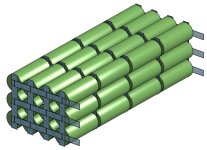
spinningmagnets said:Search "resistance soldering unit" / RSU
I want to solder a AWG8 cable to the bus bars
The overcharge protection is not directly related to the capacitor type, as there are multiple revisions with Maxwell, some without and some with the protection. You can tell that the board has protection by the presence of a small black heatsink in the control section. The protection cuts off the charger when reaching 8.4 ... 8.5V, and periodically reconnects keep the caps topped up. I recommend to limit the charger voltage to 8.5V in order to have double protection, but 12V is also ok. The unprotected boards need to be limited to 8.1V externally. I haven't tested the old Maxwells at 2.85V per cell, so I can't truly recommend using 8.5V on these modules. But generally, going close to the max will produce the most welding current.Eraser-1 said:differences between the old kCap-board (Maxwell) and the new one (SkelCap).
